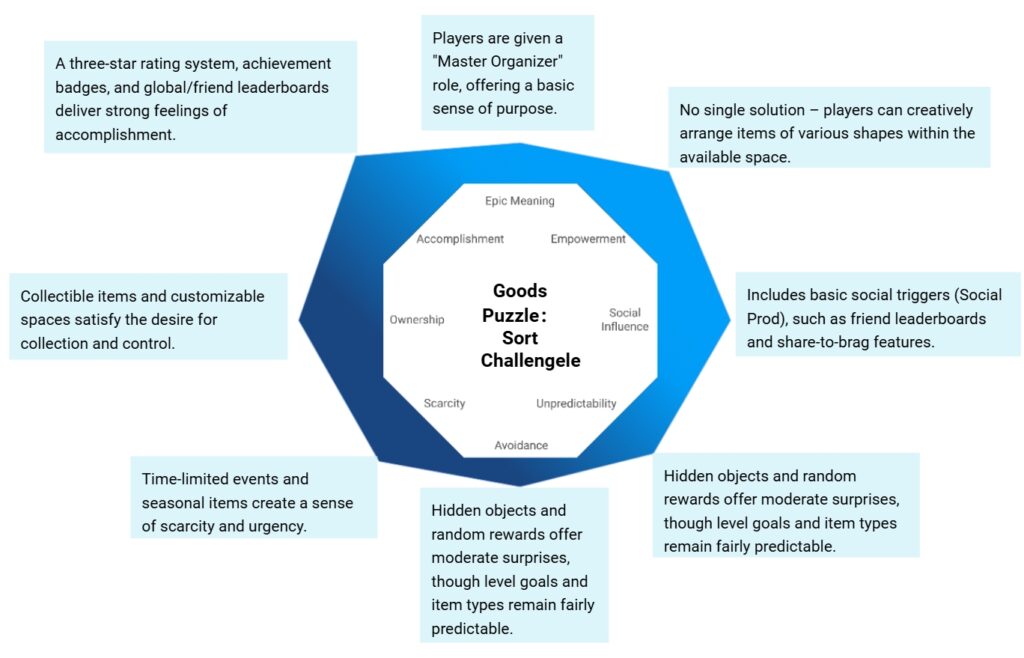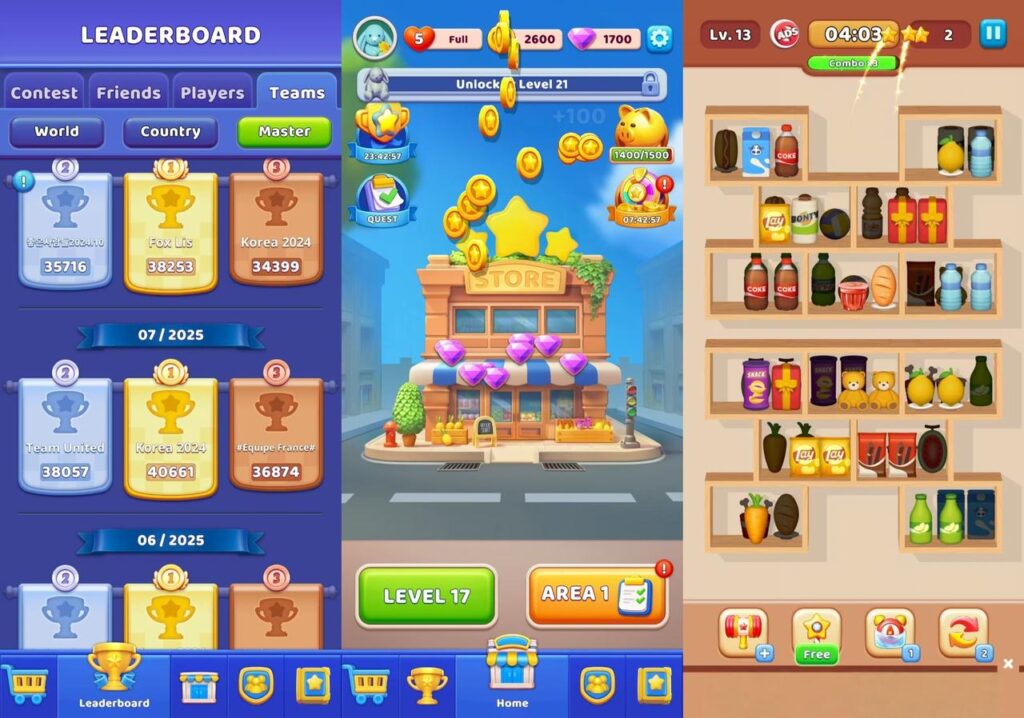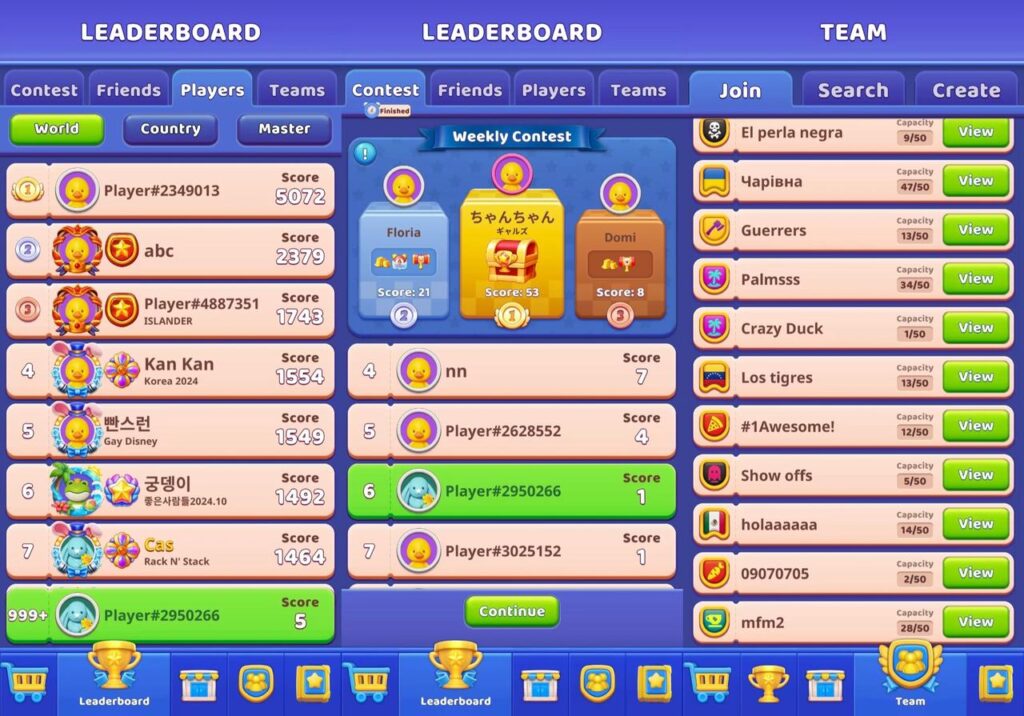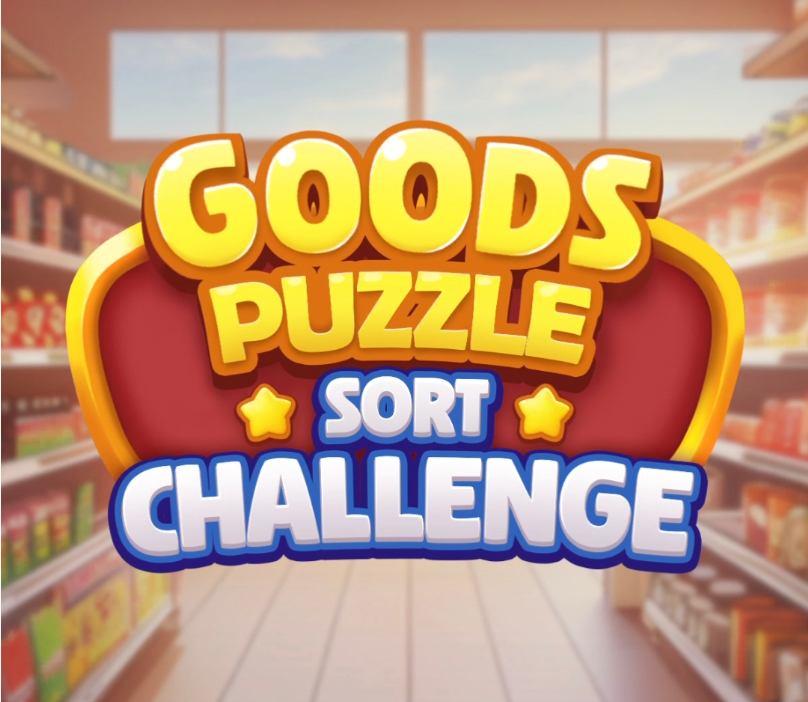If you’re into goods-sorting games, you’ve probably heard of Goods Puzzle: Sort Challenge. This hyper-casual tidying and organizing game launched in 2024 has already garnered over 46,000 ratings with an impressive average of 4.7 stars.
If you’re into goods-sorting games, you’ve probably heard of Goods Puzzle: Sort Challenge. This hyper-casual tidying and organizing game launched in 2024 has already garnered over 46,000 ratings with an impressive average of 4.7 stars.
Today, we’ll thoroughly evaluate “Goods Puzzle: Sort Challenge” using Yu-kai Chou’s gamification framework – Octalysis – combined with hands-on experience of this relaxing sorting game. Here’s our detailed breakdown:
| Core Drive | Score (1-10) | Evaluation Description |
|---|---|---|
| Meaning | 4 | Players are given a “Master Organizer” role, offering a basic sense of purpose. |
| Accomplishment | 9 | A three-star rating system, achievement badges, and global/friend leaderboards deliver strong feelings of accomplishment. |
| Empowerment | 7 | No single solution – players can creatively arrange items of various shapes within the available space. |
| Ownership | 8 | Collectible items and customizable spaces satisfy the desire for collection and control. |
| Social Influence | 7 | Includes basic social triggers (Social Prod), such as friend leaderboards and share-to-brag features. |
| Scarcity | 6 | Time-limited events and seasonal items create a sense of scarcity and urgency. |
| Unpredictability | 5 | Hidden objects and random rewards offer moderate surprises, though level goals and item types remain fairly predictable. |
| Avoidance | 3 | Daily login rewards and progress saving help prevent the fear of loss. |
GScore: 329
Evaluation Notes:
- Scoring range: 1–10. Higher scores reflect stronger implementation of the core drive and greater player motivation.
- GScore (Gamification Score): Calculated using the Octalysis Framework tool.
Octalysis Radar Chart

Detailed Analysis
1. Meaning (4/10)
Although the game has clear themes – like organizing toy shelves or cleaning up cluttered warehouses – it lacks a deeper narrative. Player motivation stems mainly from the intrinsic satisfaction of tidying up. That said, a lighter “meaning” is typical for casual puzzle games like this.
2. Accomplishment (9/10)
This is the game’s strongest core drive. A clear progress bar, three-star ratings, achievement badges, and ultimate challenges provide huge satisfaction. Unlocking chapters and earning medals serve as the primary motivation for players to keep progressing.

3. Empowerment (7/10)
To maintain combos, players must think strategically about sorting order and use power-ups like magnets and bombs to solve puzzles. The game offers instant feedback through flashy VFX (like coin bursts and level-up animations), crisp ASMR-inspired sound effects (for sliding, dropping, and collisions), and growing progress bars. That said, the overall gameplay structure remains fairly fixed, leaving limited room for creative expression.
4. Ownership (8/10)
By playing, users earn coins and gems that can be used to unlock new levels, themes, and special items. The “Remove Ads” purchase is a classic example of strengthening permanent ownership—a type of investment that enhances the player’s sense of possession and long-term engagement.
5. Social Influence (7/10)
While leaderboards drive strong competition and mimicry motivation, the game lacks deeper social connections such as cooperative levels, sending lives, or visiting friends’ spaces. As a result, its social drive relies mainly on the “social pressure” from rankings rather than meaningful interaction.

6. Scarcity (6/10)
The game uses familiar scarcity mechanics: an energy system, daily login rewards, and limited-time events (offering rare items) that tap into “FOMO” (fear of missing out) to encourage regular logins.
7. Unpredictability (5/10)
This drive is underutilized. While new combinations of items in each level provide mild curiosity, the core loop remains predictable. There’s a lack of random rewards, Easter eggs, or narrative twists to sustain player curiosity over time.
8. Avoidance (3/10)
This is the weakest drive. Daily login rewards only lightly tap into avoidance psychology. There’s no real progress loss or anxiety-inducing penalty system, making the overall experience stress-free and relaxed.
Overall Summary
The Octalysis footprint of Goods Puzzle: Sort Challenge is typical of successful hyper-casual games: it’s right-skewed (focused on extrinsic motivation) and leans toward White Hat core drives.
This structure fits its target audience perfectly—casual players looking for quick positive feedback and light competition during spare moments. It’s also exactly what makes the game both addictive and satisfyingly relaxing.
Read More: https://us.09gamereview.com/blog/


Leave a Reply